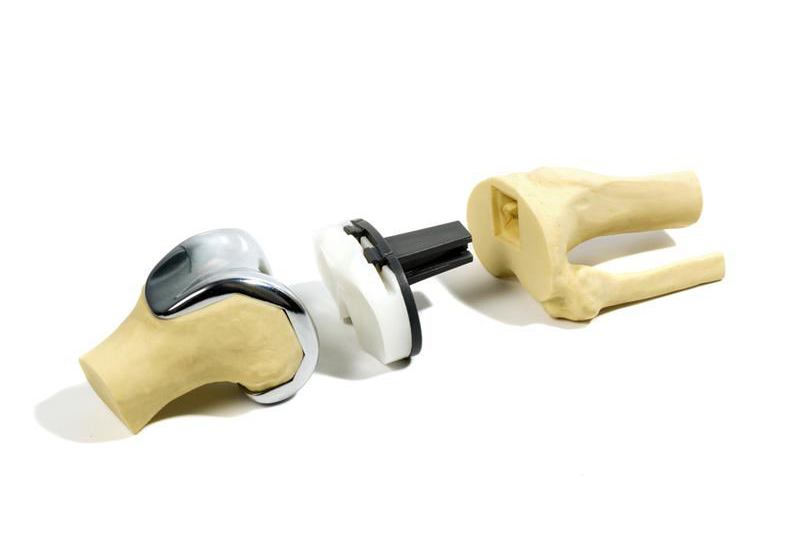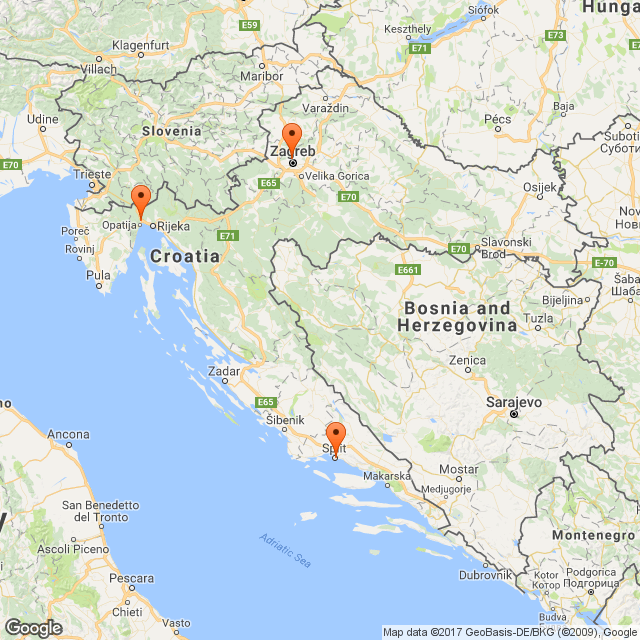Endoprosthesis

Endoprosthesis
Degenerative arthritis in the knee is caused by a combination of mechanical and biological factors. Changed knee axis (bow-legged or knock –kneed deformity) causes too much pressure on the articular cartilage, which wears thin, and thus, creates inflammatory reaction. This leads to bone spurs (osteophytes) in and around the joint and narrowing the knee slot. Walking becomes painful, while the pain increases under higher pressure on the knee (e.g. while standing up from a sitting position). Over time the scope of knee movements decreases and each change of the joint position evokes pain.
TREATMENT
At an early stage of arthrosis, a conservative treatment is applied. It includes physical therapy, weight loss, anti-inflammatory blockers and the use of analgesics. Advanced stage of arthrosis causes a complete damage of the cartilage in all parts of the knee, and thus, knee joint surfaces must be replaced, i.e. knee endoprosthesis should be inserted.
With knee replacement surgery the pain disappears and the patient regains a total mobility of the knee. In our hospital we insert endoprosthesis with computer navigation. With an infrared camera we register points on the knee and the computer creates a virtual model of the knee. We specify the necessary resection of the joint surfaces on the computer, and after that, dynamically, in real time; we prepare the thigh and the shin bone for the implant of the endoprosthesis. This technique, allows deviations usually less than 1 millimetre and 1 grade of the desired axis. All this enables a more precise insertion of the endoprosthesis, which should improve its function and its duration.
Applying this technique, we have inserted over 200 endoprostheses so far.
 In cases when only the inside, or medial side, of the joint is worn thin (bow-legged deformity) or outside, or lateral side, of the knee wears thin (knock-knees), it is possible to insert a PARTIAL ENDOPROSTHESIS. In most cases the medial side of the knee is damaged. To insert a partial endoprosthesis, the other parts of the knee must be healthy, i.e. the cartilage has to be preserved. However, the leg axis ("bow-legged or knock-kneed deformity) cannot be completely corrected, only up to 10 degrees at most.
In cases when only the inside, or medial side, of the joint is worn thin (bow-legged deformity) or outside, or lateral side, of the knee wears thin (knock-knees), it is possible to insert a PARTIAL ENDOPROSTHESIS. In most cases the medial side of the knee is damaged. To insert a partial endoprosthesis, the other parts of the knee must be healthy, i.e. the cartilage has to be preserved. However, the leg axis ("bow-legged or knock-kneed deformity) cannot be completely corrected, only up to 10 degrees at most.
The surgery is minimally invasive, it is performed through much smaller incisions in the skin than in the case of total endoprosthesis.

REHABILITATION
The patient stays in hospital for 3-4 days. With the help of a physiotherapist, the patient starts with physical therapy on the same day the surgery is performed. The day after the surgery, the patient walks with two crutches, with the help of a physiotherapist. After a week or two, the patient walks with one crutch. The patient continues to walk with one crutch for the period of several weeks, until he or she feels secure enough to walk without the crutch. The checkups in the hospital should follow after six weeks, then, after three and six months. After that, checkups are recommended once a year.
3D Animation (Total Knee Replacement)
3D Animation (Partial Knee Replacement)
3D Animation (Revision Knee Replacement)

